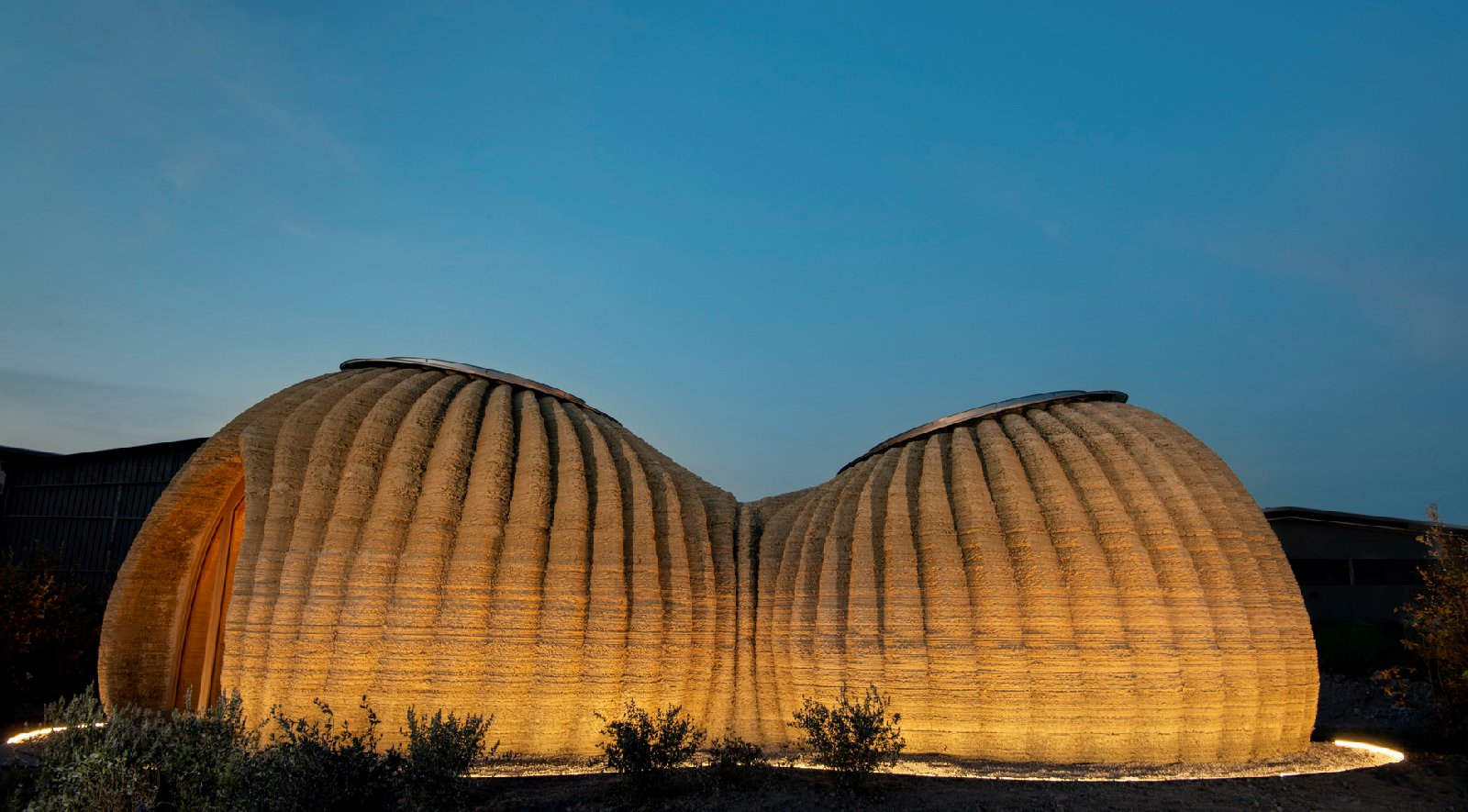MCA – Mario Cucinella Architects – and WASP – World’s Advanced Saving Project – have completed TECLA – Technology and Clay -, the first eco-sustainable housing model 3D printed entirely from local raw earth. This genuinely innovative and pioneering approach was conceived from the start as a joint project between the two firms, who worked closely throughout the project’s design and construction.
Metaphorically inspired by one of Italo Calvino’s ‘invisible cities’ – the city in continuous construction – the name TECLA evokes the strong link between past and future by combining the matter and spirit of timeless ancient homes with the world of 21st-century technological production. Born from a research project by Mario Cucinella (Founder and Creative Director of Mario Cucinella Architects) and through the vision of Massimo Moretti (Founder of WASP).
TECLA responds to the increasingly serious climate emergency, to the need for sustainable homes at Km0 and to the great global issue of the housing emergency that will have to be faced – particularly in the context of urgent crises generated, for example, by large migrations or natural disasters. “It would be truly extraordinary to shape the future by transforming this ancient material with the technologies we have available today. The aesthetics of this house are the result of a technical and material effort; it was not an aesthetic approach only. It is an honest form, a sincere form” says Mario Cucinella.
“TECLA shows that a beautiful, healthy, and sustainable home can be built by a machine, giving the essential information to the local raw material. TECLA is the finger that points to the Moon. The Moon is the home, as a birthright, for everybody on the planet. From TECLA on, that’s getting possible” Massimo Moretti, WASP Founder. Located in Massa Lombarda, Ravenna – Italy, TECLA has become a reality thanks to the eco-sustainability research of the SOS – School of Sustainability (training center founded by Mario Cucinella), the pioneering research projects of Mario Cucinella Architects and the collaborative 3D printing technology of WASP.
TECLA is an innovative circular housing model that brings together research on vernacular construction practices, the study of bioclimatic principles and the use of natural and local materials. It is a nearly zero-emission project: its casing and the use of an entirely local material allows for the reduction of waste and scraps. This and the use of raw earth make TECLA a pioneering example of low-carbon housing. For this project, Mario Cucinella Architects not only explored housing solutions in formal aesthetic terms, it also studied the building’s shape in relation to its climate and latitude.
In addition, the composition of the earth mixture responds to local climatic conditions and the filling of the envelope is parametrically optimised to balance thermal mass, insulation and ventilation according to the climate needs. TECLA is a composition of two continuous elements that through a sinuous and uninterrupted sine curve culminate in two circular skylights that convey the ‘zenith light’. The atypical shape, from the geometry to the external ridges, has enabled the structural balance of the construction – both during the 3D printing phase of the envelope and once the covering is completed – giving life to an organic and visually coherent design.
With an area of about 60 square meters, it comprises a living zone with a kitchen and a night zone which includes services. The furnishings – partly printed in local earth and integrated into the raw-earth structure, and partly designed to be recycled or reused – reflect the philosophy of a circular house model. The technological research of WASP, specialised in Km0 3D printing from raw earth, has led to an innovative 3D printing technology called Crane WASP, the first in the world to be modular and multilevel, designed to build construction works collaboratively.
TECLA uses two synchronised printer arms simultaneously thanks to software capable of optimising movements. Each printer unit has a printing area of 50 square meters which therefore makes it possible to build independent housing modules in a few days. In brief: TECLA can be delivered with 200 hours of printing with 60 cubic meters of natural materials for an average consumption of less than 6 kW. The housing model is entirely Made in Italy: in addition to Mario Cucinella Architects and WASP, it sees the participation of Italian-only companies. Source by Mario Cucinella Architects and WASP.
- Location: Massa Lombarda, Italy
- Architect: Mario Cucinella Architects
- Collaborative 3D Printing Technology Project: WASP
- TECLA partners: Comune di Massa Lombarda, SOS
- Sustainability Research: School of Sustainability
- Doors and Windows: Capoferri Serramenti
- Mechanical and Electrical Services: Cefla
- Landscape Design: Frassinago
- Timber Fittings: Imola Legno
- Lighting Design: Lucifero’s
- Infilling Blend Optimisation in 3D Printing Phase: Mapei
- Construction Geometry Optimisation for Self-Supporting Structure: Milan Ingegneria
- Recycled Cardboard Seating: Officine Tamborrino
- Recycled Fabrics: Orange Fiber
- Earthen Flooring: Primat
- Infilling Biomaterial: Rice House
- Construction: Ter Costruzioni, WASP
- Year: 2021
- Photographs: Iago Corazza, Courtesy of Mario Cucinella Architects









